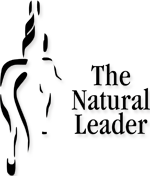 Synchronicity, the experience of two or more unrelated events occuring together in a meaningful manner, happened.
Synchronicity, the experience of two or more unrelated events occuring together in a meaningful manner, happened.
Two recent but separate events connected a few key concepts to a problem I am facing. The first a talk by Judge John Reilly on his book Bad Medicine a reflection of his experience and struggle for justice in a First Nations community, followed by the CBC show Ideas on the drive home.
Judge Reilly spoke of his awakening to the concept of world view throught the tragedy that was occurring in the interpretation of the euro-centric justice system on First Nations communities. While Indigenous people make up 3% of the population of Canada, they represent over 70% of those incarcerated. It was his new found awareness that caused him to challenge and change the justice system for the First Nations community west of Calgary.
The CBC radio segment Ideas, presented a series of life stories by adults with Asperger syndrome, a form of high functioning autism, and their struggle to fit into a societal view of norms. An “Aspy”, as they referred to themselves, process information differently. An example one speaker gave: referring to the noise the fan was making. For many, a noise that wasn’t noticed until pointed out, for a few something they have been concentrating hard to block out so they could focus on the speaker. He suggested an Aspy spends their whole life trying to block out all the other stimuli around them, an exhausting effort.
While one event spoke of the justice system, the other about a physiological or psychological condition both brought together the concept of worldview. The synchronicity, two perspectives offering something unique for a horse I am working with.
Stella has been here since October. What began as a nursing project to heal a badly injured leg has developed into the study of an ultra-sensitive horse. I have had the great pleasure of starting numerous horses now and believe I have come to understand what to look for in a colt as they are developing. Stella (think of the play A Streetcar Named Desire) is not like any of the other horses I have started. While I have had a few suggestions that could profile her according to certain traits, consider a Myers-Briggs for horses, in my view what gets in the way as once defined, the label creates expectations and it becomes easier to broad stroke what may show up.
I believe there are huge advantages to people becoming aware of and reflecting on their own natural tendencies through the various assessment tools. Awareness is the first step in challenging ourselves to step outside of our comfort zone, I have come to understand a lot about myself through these exercises. The profiling tools also help us recognise and respond appropriately to these identified traits in others. The challenge in doing the same thing to a horse is they have no opportunity to respond to that label. They are simply the way they are.
The concept of worldview is not new to me, but the other night I had a whole new understanding as to what it means to me through the work I do. Stella is and thinks like a horse, but rather than one who starts to see a pattern after say two or three times, she will continue to see something different in each effort.
My favourite quote by Temple Grandin one that has gained a whole new meaning with Stella is “we may see the world in color, animals see the world in detail.” What is just a flag, a stick or a rope after a few tries with most horses – is something completely different and still poses a threat to Stella after many. Like an Aspy I believe Stella simply processes the information differently than other horses so she is reminding me yet one more time each horse is an individual. While I remain the same in how I might believe I am delivering the message, the weather might be different, another person present, the laundry on the line all represent stimuli she is processing while I am trying to get her to focus.
As I have added or subtracted elements with Stella I have learned to make no assumptions, take each effort as a new try to help her through each change. The more attention I also pay to the details the quicker we get from one step to the next. While it may have been a different label that caught my attention it was the concept of worldview that changed what I too began to notice. Stella requires that I remained focused on the moment, not distracted by what might show up and flexible to adapt to what does.
Watch Judge John Reilly’s talk “My Aboriginal Education” on TedxCalgary
 North of the 49th parallel the summer days are long and the months all too short but it is the season for my own professional development. Having just returned from four days of riding and learning my head is full as I try to put the feel of the right actions in my body. This year’s real success, I finally put meaning to the statement “own the feet”.
North of the 49th parallel the summer days are long and the months all too short but it is the season for my own professional development. Having just returned from four days of riding and learning my head is full as I try to put the feel of the right actions in my body. This year’s real success, I finally put meaning to the statement “own the feet”. 




